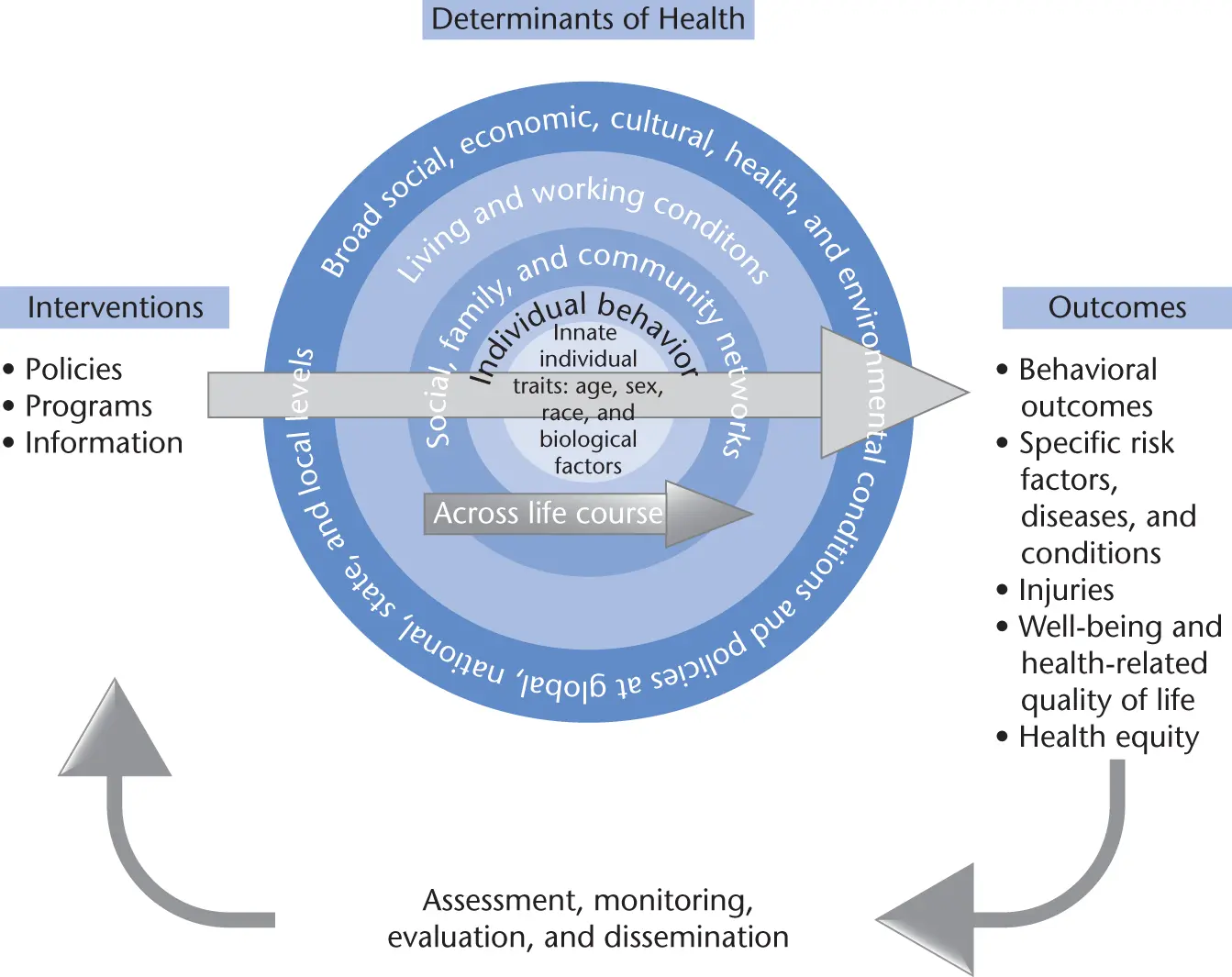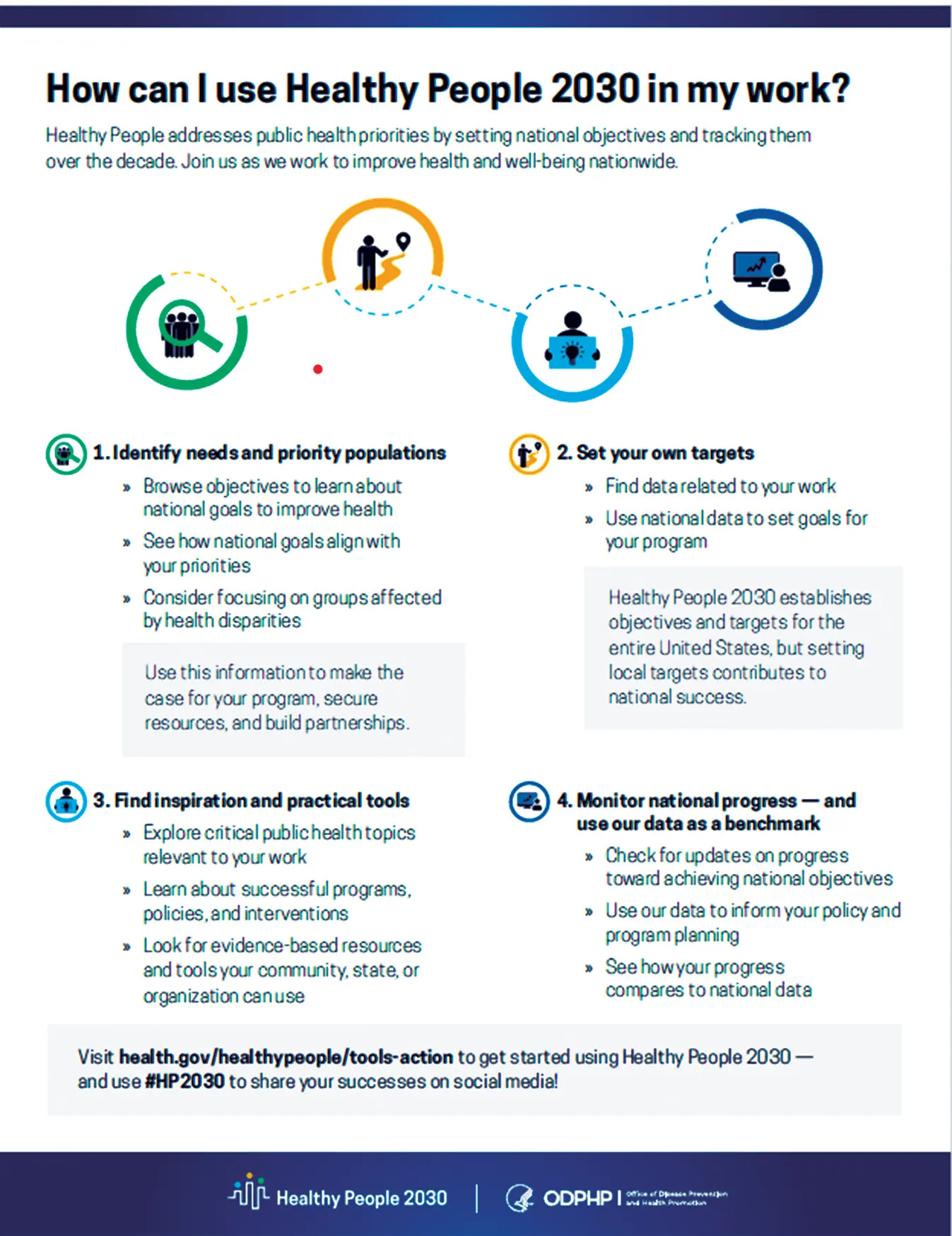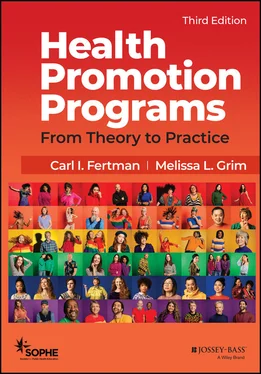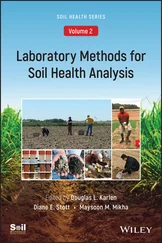(SOPHE) Society for Public Health Education - Health Promotion Programs
Здесь есть возможность читать онлайн «(SOPHE) Society for Public Health Education - Health Promotion Programs» — ознакомительный отрывок электронной книги совершенно бесплатно, а после прочтения отрывка купить полную версию. В некоторых случаях можно слушать аудио, скачать через торрент в формате fb2 и присутствует краткое содержание. Жанр: unrecognised, на английском языке. Описание произведения, (предисловие) а так же отзывы посетителей доступны на портале библиотеки ЛибКат.
- Название:Health Promotion Programs
- Автор:
- Жанр:
- Год:неизвестен
- ISBN:нет данных
- Рейтинг книги:5 / 5. Голосов: 1
-
Избранное:Добавить в избранное
- Отзывы:
-
Ваша оценка:
- 100
- 1
- 2
- 3
- 4
- 5
Health Promotion Programs: краткое содержание, описание и аннотация
Предлагаем к чтению аннотацию, описание, краткое содержание или предисловие (зависит от того, что написал сам автор книги «Health Promotion Programs»). Если вы не нашли необходимую информацию о книге — напишите в комментариях, мы постараемся отыскать её.
Health Promotion Programs: From Theory to Practice
Health Promotion Programs: From Theory to Practice
Health Promotion Programs — читать онлайн ознакомительный отрывок
Ниже представлен текст книги, разбитый по страницам. Система сохранения места последней прочитанной страницы, позволяет с удобством читать онлайн бесплатно книгу «Health Promotion Programs», без необходимости каждый раз заново искать на чём Вы остановились. Поставьте закладку, и сможете в любой момент перейти на страницу, на которой закончили чтение.
Интервал:
Закладка:
With recognition of the importance of one’s lifestyle in the ultimate manifestations of disease, a shift in the understanding of disease causation occurred, making health statusthe responsibility not only of the physician, who ensures health with curative treatments, but also of the individual, whose choice of lifestyle plays an important role in preventing disease.
The Lalonde report set the stage for the World Health Organization meeting in which the Ottawa Charter for Health Promotion (World Health Organization, 1986) was developed. This pivotal report was a milestone in international recognition of the value of health promotion. The report outlined five specific strategies (actions) for health promotion:
Develop healthy public policy.
Develop personal skills.
Strengthen community action.
Create supportive environments.
Reorient health services.
In the United States, the Lalonde report formed the foundation for Healthy People: The Surgeon General’s Report on Health Promotion and Disease Prevention (U.S. Department of Health and Human Services, 1979), which sets national goals for reducing premature deaths ( Healthy People is discussed in the next section). In the subsequent 50 years since the first Healthy People report, the focus on the root causes of premature illness and death now include an understanding of the social determinants of health. Choices individuals make about individual health behaviors are determined not only by personal choice but by opportunities or lack thereof in the places that they live, work, and play.
In 1997, the Jakarta Declaration on Leading Health Promotion into the 21st Century (World Health Organization, 1997) added to and refined the strategies of the Ottawa Charterby articulating the following priorities:
Promote social responsibility for health.
Increase investment for health developments in all sectors.
Consolidate and expand partnerships for health.
Increase community capacity and empower individuals.
Secure an infrastructure for health promotion.
The Jakarta Declarationgave new prominence to the concept of the health setting as the place or social context in which people engage in daily activities in which environmental, organizational, and personal factors interact to affect health and well-being. No longer were health programs the sole province of the community or school. Various settingswere to be used to promote health by reaching people who work in them, by allowing people to gain access to health services, and through the interaction of different settings. Most prominently, workplaces and healthcare organizations as well as schools and communities were now seen as sites for action in health promotion (World Health Organization, 1998).
Stage 3: Multiple Levels of Influence on Health
The third stage of health promotion started at beginning of the 21st century with the realization that even within high income countries there could be a difference of almost 20 years in life expectancy—even in those countries that had a well-developed healthcare system providing care to all citizens (Kaplan et al., 2015). Individual decisions about health behaviors were rooted in the social environment in which people are born, live, work, and play (Marmot, 2005). The social institutions (economic systems, housing, healthcare system, transportation system, educational system), the surrounding environment, social relationships, and civic engagement all provide opportunities for individuals to make healthy choices—or not. One’s opportunities for a healthy life style are severely limited if there is no affordable low-income housing, no transportation infrastructure that allows individuals to pursue employment outside of their neighborhood, no supermarkets in the neighborhood with fresh fruits and vegetables, no safe parks in which to play or exercise, or no quality schools to provide a quality education in the neighborhood.
Today, health promotion is a specialized area in the health fields that involves the planned change of health-related lifestyles and life conditions through a variety of individual and environmental changes. Figure 1.2 illustrates the dynamic interaction between strategies aimed at the individual and strategies for the entire population.

Figure 1.2 Dynamic interaction between strategies aimed at the individual and strategies for the entire population
Source : Phase I Report - Recommendations for the Framework and Format of Healthy People, U.S. Department of Health and Human Services, 2020.
Healthy People 2030 : A National Public-Private Partnership to Promote Health
Every decade since 1980, the U.S. Department of Health and Human Services has reinstituted the same public-private process and released an updated version of Healthy People that provides the overarching goals and objectives that will guide and direct the health promotion actions of federal agencies; local and state health departments; and practitioners, academics, and health workers at all levels of government.
For individuals engaged in health promotion, one value of the Healthy People framework is access to national data and resources. Because the initiative addresses such a broad range of health and disease topics, health promotion program staff can usually find objectives that are similar to those they are planning to address in their locales. Using Healthy People information allows program staff to compare their local population data with national data and to use resources that have been generated nationally in order to achieve the national objectives.
Healthy People 2030continues to expand the reach of health promotion, recognizing that many sectors contribute to the health of people. For Healthy People 2030 , the World Health Organization’s definition of health promotion remains relevant. However, the emphasis shifts to the social and environmental opportunities for improving population health, as noted in the WHO definition of health promotion. That definition is more empowering, more aspirational, and less prescriptive than ones adopted in earlier decades.
Although individuals share some responsibility for their health, supportive environments make their choices easier. The United States has not made the progress over decades of work needed for improving health and eliminating disparities. To achieve different outcomes in this decade, Healthy People 2030 emphasizes and suggest different ways of prioritizing both time and money. Healthy People 2030 follows the lead of the Robert Wood Johnson Foundation to take a holistic approach to empower individuals and communities to take actions for their own health, foster leadership for public health, promote intersectoral action to build healthy public policies, and create sustainable health systems in society. It continues to recommend interventions at the personal, organizational, social, and political levels to enable changes in lifestyles, environments, and other realms to improve or protect health. Figure 1.3 illustrates how to use the Healthy People 2030 to promote health.

Figure 1.3 Using Healthy People 2030 to promote health
Читать дальшеИнтервал:
Закладка:
Похожие книги на «Health Promotion Programs»
Представляем Вашему вниманию похожие книги на «Health Promotion Programs» списком для выбора. Мы отобрали схожую по названию и смыслу литературу в надежде предоставить читателям больше вариантов отыскать новые, интересные, ещё непрочитанные произведения.
Обсуждение, отзывы о книге «Health Promotion Programs» и просто собственные мнения читателей. Оставьте ваши комментарии, напишите, что Вы думаете о произведении, его смысле или главных героях. Укажите что конкретно понравилось, а что нет, и почему Вы так считаете.












